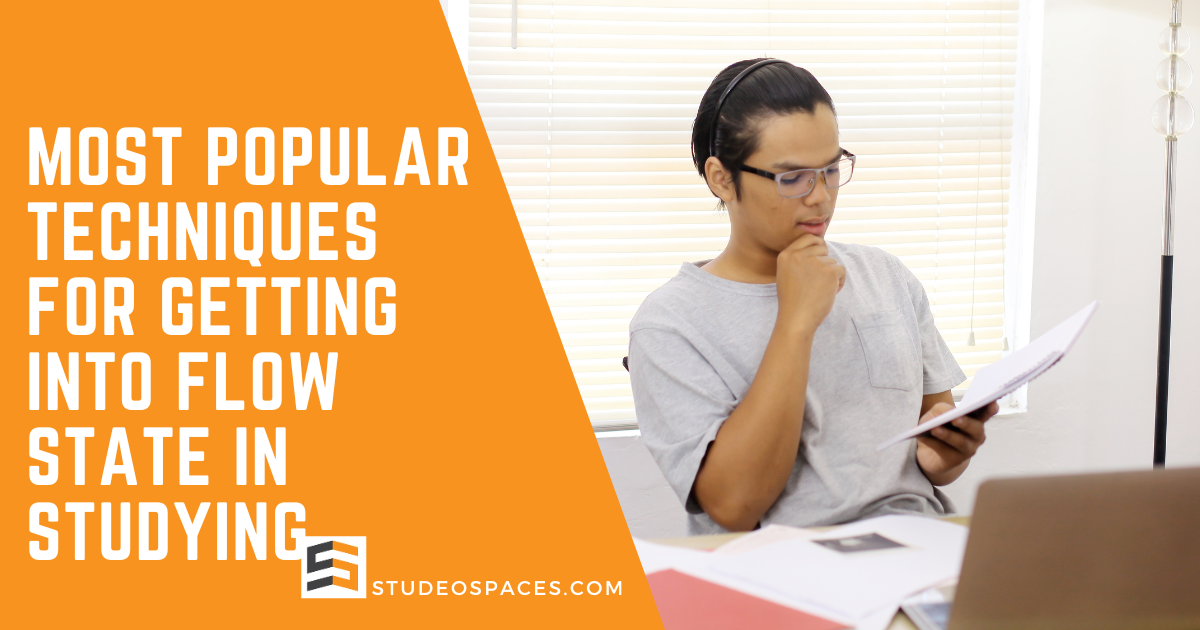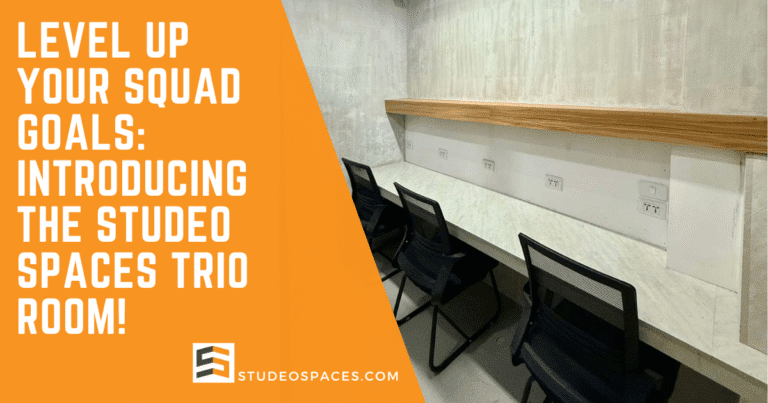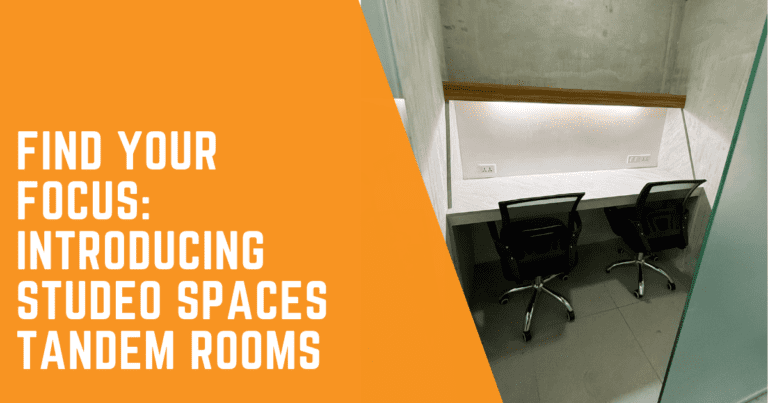
Most Popular Techniques for Getting Into Flow in Studying: Let’s strategies students use to achieve heightened focus and productivity during their study sessions. From setting clear goals to creating the perfect study environment, the article delves into practical tips like time-blocking, reducing distractions, and employing mindfulness practices to enhance concentration.
This is often called the “Flow State,” a mental state where individuals are so involved in an activity that nothing else seems to matter. Getting into Flow can significantly enhance your productivity and efficiency, especially when studying. But how do you get into the flow state? Let’s explore the most popular study techniques for getting into a flow state in studying.
What is Getting Into Flow?
Before diving into the techniques, it’s essential to understand what Flow State is. Coined by psychologist Mihaly Csikszentmihalyi, the flow state is described as the optimal experience in which a person is fully immersed in an activity. This intense focus and productivity zone can make studying more effective and enjoyable.
Benefits of Flow State
Getting into Flow can offer numerous benefits beyond mere productivity. When in flow, individuals often experience:
- Enhanced Concentration: Deep focus on the task at hand.
- Greater Satisfaction: A sense of achievement and enjoyment.
- Improved Performance: Better results in both understanding and retention.
- Reduced Stress: The immersive nature can diminish stress and anxiety.
Setting the Stage for Getting Into Flow
Your environment is crucial in enabling you to achieve getting into flow. Here are some tips to create the perfect setting:
Declutter Your Study Space
Having a messy study area can be distracting. Keep your desk clean and organized to minimize diversions.
Control Noise Levels
Background noise can be a significant distraction. Consider using noise-canceling headphones or listening to non-distracting background music or white noise.
Optimize Lighting
Good lighting is essential for maintaining focus and reducing eye strain. Use natural light when possible, or ensure your study space is well-lit.
Use Comfortable Seating
Uncomfortable seating can lead to aches and disrupt your concentration. Invest in a good study chair that offers support and comfort.
Techniques to Getting Into Flow
Now that your study environment is set up for success let’s delve into techniques to help you get into the flow state.
Set Clear Goals
Knowing your aim in a study session can channel your focus. Break down your study material into manageable chunks and set clear, attainable goals for each session.
Eliminate Distractions
Distractions are the enemy of flow. Turn off notifications on your devices, and let others know that you’re not to be disturbed.
Use Timed Study Sessions
The Pomodoro Technique, which involves studying for 25 minutes followed by a 5-minute break, can help maintain focus while preventing burnout. This technique keeps your mind fresh and engaged.
Focus on One Task at a Time
Multi-tasking is a myth when it comes to studying. Focus on one subject or task at a time to dive deeper into the material.
Engage in Active Learning
Participate actively in your studies by summarizing information, asking questions, and teaching the material to someone else.
Practice Mindfulness
Mindfulness can help center your thoughts, making it easier to enter flow. Techniques such as deep breathing and meditation can be beneficial.
Tools and Resources to Aid in Getting Into Flow
Using the right tools and resources can make it easier to getting into Flow. Here are some recommended options:
Digital Tools
- Forest App: Helps you stay focused by planting virtual trees that grow as long as you stay off your phone.
- StayFocusd: A browser extension that limits your time on distracting websites.
- Notion: An all-in-one workspace to organize your study materials and goals.
Physical Tools
- Noise-Canceling Headphones: These help you block out distracting noises.
- A Good Planner: To keep track of your goals and deadlines.
- Textbooks and Highlighters: Essential for traditional and hands-on learning.
Practical Exercises to Getting Into Flow
Specific exercises can help you practice getting into a flow state:
Visualization
Before starting your study session, take a few moments to visualize yourself completing your tasks. This can help set a positive tone and prepare your mind for focused work.
Deep Work Intervals
Allocate specific times of the day for deep work where you focus solely on studying. Remove all distractions during this time to dive into your material fully.
Regular Review Sessions
Regularly reviewing your study materials helps with retention and makes it easier to get into flow since the material becomes more familiar.
The Role of Physical and Mental Health in Getting Into Flow
Your physical and mental well-being plays a significant role in your ability to enter and maintain a flow state.
Exercise Regularly
Regular physical activity can improve your concentration and mood, making it easier to enter flow.
Maintain a Healthy Diet
Fuel your brain with nutritious foods to keep your energy levels stable. Avoid heavy meals and sugary snacks that can cause energy crashes.
Sleep Well
A well-rested mind is a focused mind. Aim for 7-9 hours of sleep per night to ensure your brain is ready for deep focus.
Manage Stress
Chronic stress can impede your ability to enter flow. Yoga, meditation, and deep breathing can help manage stress levels.
How to Sustain Flow State
Once you’ve entered flow, the challenge is to sustain it. Here are some strategies:
Follow a Routine
A consistent study routine can signal your brain that it’s time to focus, making entering and staying in flow easier.
Monitor Your Energy Levels
Be aware of your energy levels and take breaks as needed. Overworking can lead to burnout, which is counterproductive.
Stay Hydrated
Dehydration can impair cognitive functions. Keep a water bottle handy and take sips regularly.
Regularly Adjust Goals
As you progress, adjust your goals to keep them challenging yet attainable. This maintains your engagement and motivation.
Flow State and Group Studying
While flow state is often a solo endeavor, studying in groups can facilitate it, provided the group dynamics are conducive.
Choose Like-Minded Peers
Study with peers who are equally focused and motivated. This minimizes disruptions and keeps the study environment productive.
Establish Group Norms
Agree on study norms, such as periods of silent study followed by discussions. This structure can help everyone maintain focus.
Utilize Group Strengths
Leverage the diverse skills and perspectives within the group to tackle challenging subjects. This collaborative approach can enhance understanding and retention.
Studeo Spaces Study Hub: Your Gateway to Getting into Flow State
At Studeo Spaces Study Hub, we believe in creating a space that fosters a state of hyper-productivity and concentration known as the “Flow State.” Located in Sampaloc, our premier destination is explicitly designed to help individuals unleash their focus and unlock their full potential.
Why Choose Studeo Spaces Study Hub?
Each approach is designed to help students reach a state of deep immersion, often called “flow,” where they can perform at their best with minimal effort. Speaking of optimal study environments, Studeo Spaces Study Hub in Sampaloc offers a premier destination for students seeking to escape distractions and unlock their full potential. With its meticulous design and commitment to providing an atmosphere conducive to peak performance, Studeo Spaces is the perfect place to help you get into the flow and achieve the best results in your tests and examinations. Have you ever found yourself completely absorbed in your studies, losing track of time and feeling utterly focused?
Supportive Environment
Our mission at Studeo Spaces Study Hub is to provide a supportive environment where students and professionals can escape distractions and elevate their studies or work. We understand the importance of creating a space that promotes peak performance and productivity.
Tailored for Optimal Study
Unlike traditional co-working spaces, Studeo Spaces Study Hub is meticulously designed to cater to those seeking an optimal atmosphere for studying or working. Our goal is to help individuals achieve their goals and reach a state of flow where they can immerse themselves fully in their tasks.
Our Commitment to Hyper-Focus
Our tagline, “Get Into the Flow,” encapsulates our commitment to helping individuals achieve a state of hyper-focus and productivity. Whether preparing for exams or looking to enhance your professional performance, Studeo Spaces Study Hub provides the perfect environment for you to thrive.
Accessibility
Studeo Spaces is open every day, seven days a week, including weekends, holidays, and inclement weather. We never close for private events since we don’t host them. Access can be as short as 19 hours daily, from 8:00 AM to 12:00 MN. You can go out and come in as frequently as you need to.
Convenient Location
It is located at the corner of Dapitan and Dela Fuente Streets, Sampaloc, Manila (7-11 on the ground floor). Easily find us using Google Maps, Waze, or Grab with the pin: Studeo Spaces.
Conclusion
Achieving the flow state can transform your study sessions into highly productive and satisfying experiences. You can enter and sustain a flow state by setting the right environment, employing effective techniques, and caring for your physical and mental well-being. For an environment uniquely designed to facilitate this state, consider Studeo Spaces Study Hub, where you can optimize your focus and unlock your full potential.
At Studeo Spaces Study Hub, we are dedicated to helping you “Get Into the Flow” and excel in your academic and professional pursuits. Whether you’re preparing for exams or need a focused environment to work, our facilities offer the perfect setting to achieve your goals. Visit us today and experience a new level of productivity.
Frequently Asked Questions About Getting Into Flow State
What is “getting into flow,” and why is it beneficial for studying?
Flow state, coined by psychologist Mihaly Csikszentmihalyi, is a mental state of deep immersion in an activity where individuals are entirely focused and lose track of time. When studying, achieving flow can lead to enhanced concentration, greater satisfaction with learning, improved performance and retention, and reduced stress and anxiety.
What are the key elements of creating an ideal study environment for getting into flow?
Creating an ideal environment involves several factors. First, declutter your space to reduce distractions. Control noise levels using headphones or listening to non-distracting sounds like white noise. Ensure good lighting, preferably natural light, to avoid eye strain. Finally, use comfortable seating to prevent physical discomfort that can break your focus.
What are some effective techniques for getting into flow while studying?
Several techniques can facilitate flow. Begin by setting clear, manageable goals for each study session. Eliminate distractions by turning off notifications and minimizing interruptions. Use timed study sessions, like the Pomodoro Technique (25-minute study, 5-minute break). Focus on one task at a time instead of multitasking. Engage actively with the material by summarizing, asking questions, and explaining it to others. Finally, incorporate mindfulness practices such as deep breathing.
What digital and physical tools can aid in getting into flow?
Digital tools such as the Forest app, StayFocusd, and Notion can help manage distractions and organize study materials. Physical tools include noise-canceling headphones, a good planner, and traditional learning materials like textbooks and highlighters.
What practical exercises can help with getting into flow?
Visualization exercises, where you imagine yourself completing your study tasks, can set a positive mindset—schedule dedicated “deep work intervals” where you eliminate all distractions and focus solely on your studies. Regularly review study materials to enhance familiarity and help getting into flow more easily.
How do physical and mental health impact the ability to getting into flow?
Your physical and mental well-being significantly affects your ability to enter a flow state. Regular exercise, a healthy diet, and adequate sleep (7-9 hours per night) all support focus and concentration. Manage stress through practices such as yoga, meditation, or deep breathing.
How can one sustain a flow state during a study session?
Establish a consistent study routine to sustain flow that signals your brain to focus. Monitor your energy levels and take breaks as needed to prevent burnout. Stay hydrated by drinking water regularly. Finally, periodically adjust goals to keep them challenging yet attainable, maintaining engagement.
How does group study affect flow, and what are best practices for group study that enable flow?
While flow state is typically a solo activity, group study can be beneficial if the dynamics are conducive. Choose peers who are focused and motivated. Establish group norms, such as alternating between silent study and discussions. Leverage the diverse skills within the group to enhance understanding and retention.
Glossary of Key Terms of Getting Into Flow
- Flow State: A mental state in which an individual is fully immersed in an activity, characterized by intense focus, enjoyment, and a sense of losing track of time. It is often linked to enhanced productivity and creativity.
- Pomodoro Technique: A time management method that involves studying or working in focused 25-minute intervals, separated by short breaks. This approach helps maintain focus and avoid burnout.
- Active Learning: A learning approach that requires the student to engage directly with the material, rather than passively receiving information, through activities like summarizing, questioning, and teaching.
- Mindfulness: A mental state achieved by focusing one’s awareness on the present moment, while calmly acknowledging and accepting feelings, thoughts, and bodily sensations. Mindfulness techniques such as meditation and deep breathing can promote focus.
- Visualization: A mental technique that involves creating a mental image of a desired outcome, such as completing a study session, which can help prepare the mind for focused work.
- Deep Work Intervals: Designated periods during the day for concentrated work, free from distractions, to maximize productivity and foster deeper immersion in tasks.
- Noise-Canceling Headphones: Audio devices that block out distracting ambient sounds, creating a more focused study environment and supporting the user’s ability to achieve flow.
- Distractions: Anything that diverts attention from the primary task, often causing difficulty with concentration and productivity; can include notifications, background noise, or disorganized surroundings.
- Studeo Spaces Study Hub: A physical location that provides a supportive environment for students and professionals seeking to enhance focus and achieve a flow state in their studies or work.
Studeo Spaces Quick Links
- Book a Desk / Room
- Location
- Rates
- Features and Amenities
- Business Hours
- Private Rooms
- Latest News
Stay Connected
- Facebook: https://www.facebook.com/StudeoSpaces
- Tiktok: https://www.tiktok.com/@studeospaces
- Youtube: https://www.youtube.com/@StudeoSpaces






